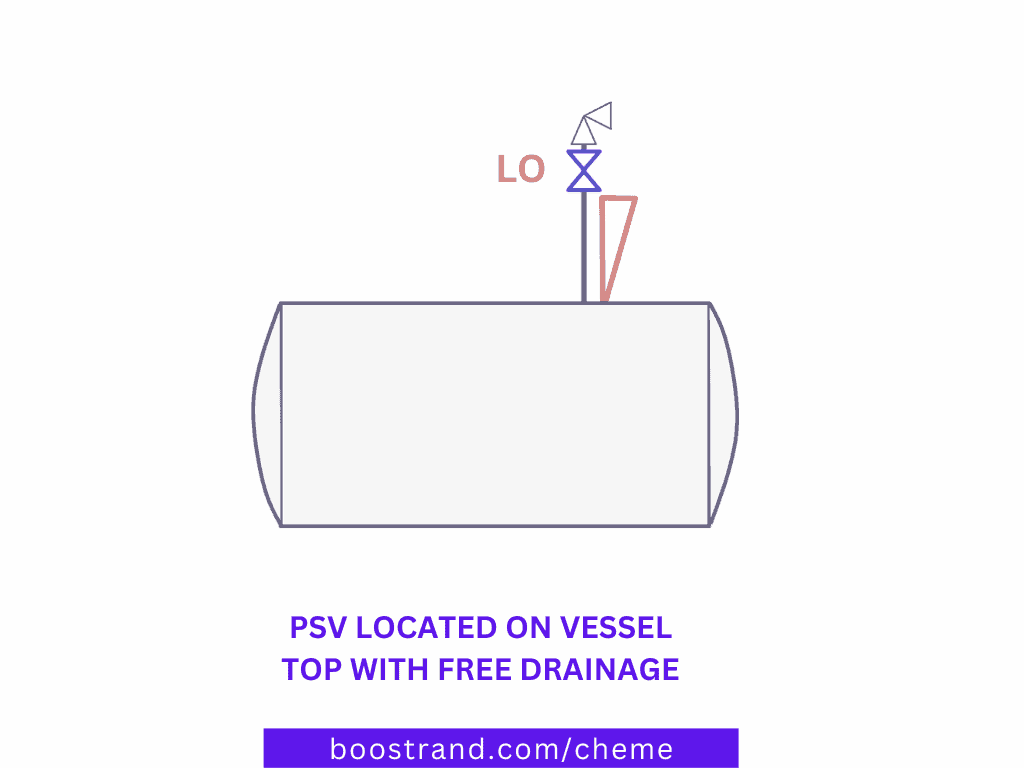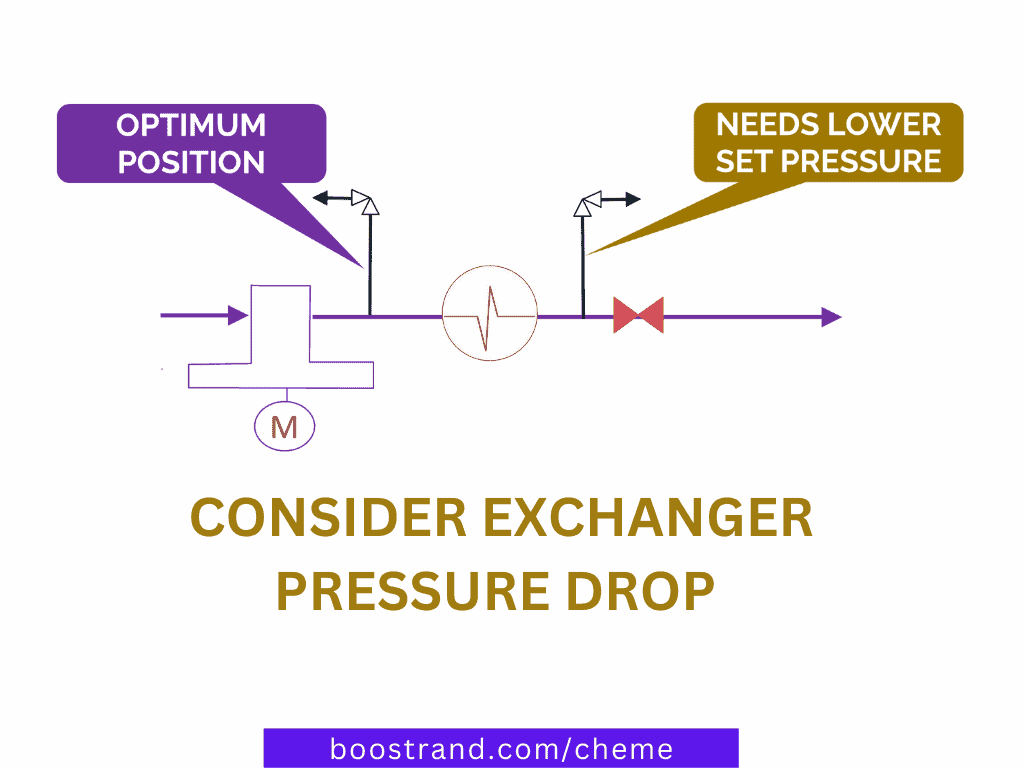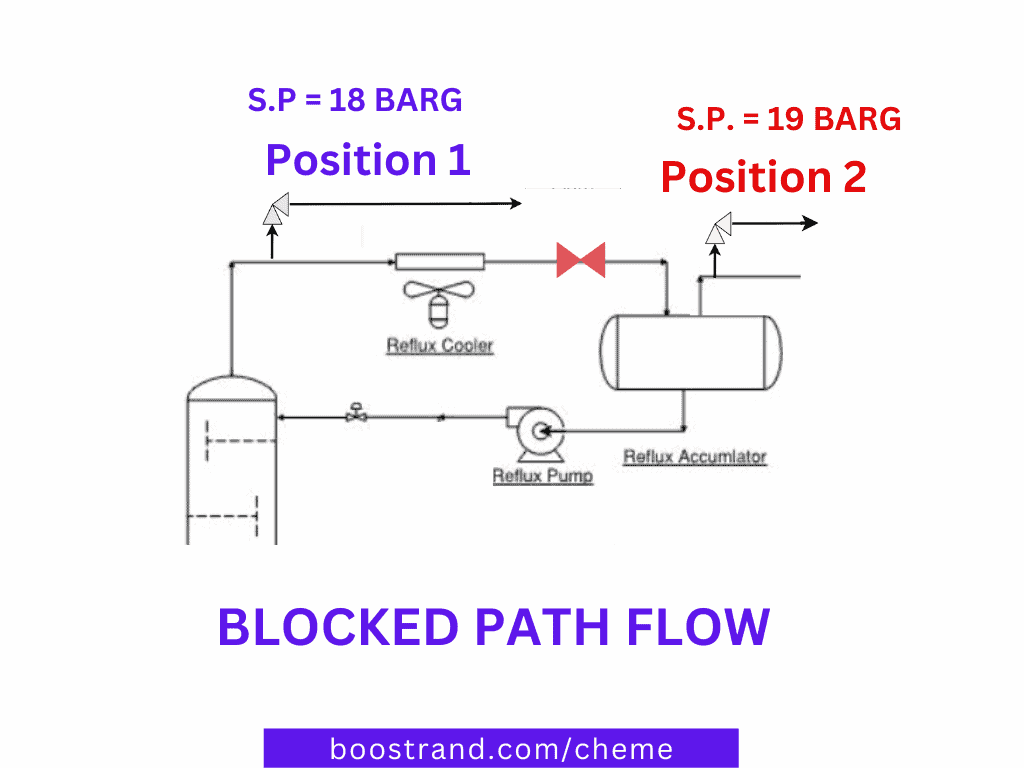Ensuring the proper functioning of a chemical or oil and gas plant involves countless steps and precautions, but one of the crucial elements is the correct positioning of Pressure Safety Valves (PSVs). Designed to release excess pressure within a system, PSVs act as a safeguard against potential hazards such as explosions or equipment failure.
However, if a PSV not installed in the right position, it may not be able to function well or even it shall be no more functioning, which can lead to overpressure in the system. As the PSV position is primarily shown on the Piping and Instrumentation Diagram (P&ID), a process engineer should be careful when preparing the P&ID in order to choose the optimum position.
In this article, we shall go through the major guidelines that should be considered when choosing the position of a PSV. So let’s start.
Always consider PSV Orientation to the top with Free Drainage
The most critical aspect of PSV positioning is their orientation. They should ideally be installed in a vertical position, with the stem facing upwards. In addition, the inlet line to the PSV is sloped towards the vessel.

This positioning allows for free drainage of any liquid that may accumulate in the valve. If a liquid were to accumulate and block the valve, it could lead to PSV malfunction or even failure.
Positioning the PSV at the top of the vessel with free drainage ensures that there is no obstruction to the flow of liquid, preventing any possibility of blockage or undesirable flow regime. This is a common practice that is dictated by API 521 and should be clearly shown on the P&ID.
Avoid any Obstacles Hindering the Relieving Flow
To ensure that the PSV operates optimally, the installation should be designed in such a way that there are no physical barriers or restrictions that could obstruct the flow during relieving. This allows for the unrestricted discharge of the relieving material, ensuring the efficient and effective release of pressure.
For example, placing the PSV upstream of other valves. If a PSV is installed downstream a valve and the valve was closed, the PSV shall be isolated from the system it should be protecting. That’s why it should be placed upstream any valve.

Also, when a PSV is installed on a vessel with a demister or a mist eliminator, it should be installed upstream of the demister. This shall ensure that the valve operates optimally and prevents any potential blockages in case the demister was plugged or experiences excessive pressure drop.

If a PSV is supposed to protect an exchanger, it should be placed upstream of the exchanger. This way, it shall not be affected by the pressure drop in the exchanger. If it was deemed necessary to place the PSV downstream the exchanger, the exchanger’s pressure drop should be subtracted from set pressure of the PSV.

So here again, a process engineer should take the position of a PSV with high care. When preparing the P&ID, he should identify all sources of blockage and ensure that they won’t hinder the PSV from opening when needed. This is even studied during HAZOP and SIL assessments to ensure that the current P&ID design is already considering the proper functioning of the PSV. In our P&ID course, we have gone through different common practices for a PSV, when we should add it, and how HAZOP and SIL studies ensure that the system has enough protection.
Avoid Overpressure Scenario Complications
The PSV should be positioned in a way to avoid issues that may hinder the operation of a PSV. Suppose we are having a fractionator overhead system, we need to protect both the tower and the reflux accumulator. That’s why we shall add a PSV to open in case the pressure reached the design pressure of the system.

The question here would be; where shall we install the PSV? Shall we install it on the tower? Or on the reflux accumulator? Or maybe on both?
Well, let’s start by answering the last question. When should we install one PSV for the whole system and when should we install 2 PSVs; one for the tower and the other for the vessel?
Case 1: Open flow path
This is governed by the flow path. If the line from the tower to the vessel passing through the condenser doesn’t have any valves, which means that there shall be no means for blockage of this line, then in this case we are talking about an open flow path.

In this case, we shall consider only ONE PSV for both the tower and the vessel. This leads us to the next question:
Where shall the PSV be placed?
Well, if we placed the PSV on the accumulator (Position 2 as shown in the photo), there may cause a severe issue.
Suppose that the reflux pump stopped, this means that the reflux rate to the tower shall be cut, which means more vapors to the condenser, and most probably more liquid fed to the accumulator. While the reflux pump is stopped, this means that level in the accumulator shall accumulate and maybe shall lead to overfilling the vessel.
This shall push the PSV to open and relieve the liquid inside instead of relieving vapor only as it should be functioning. If we are talking about liquids at a high pressure and low temperature, as the case in deethanizers for example, the liquid shall even be subject to very low temperatures, which may cause metal embrittlement.
So this is totally an undesirable scenario. In this case the correct position shall be POSITION 1.
Let's go into P&IDs
P&ID journey: familiarize with P&ID details, anatomy, workflow, discover operation, maintenance & safety best practices
Case 2: Flow Path can be blocked
However, if this line has any obstacles that shall cause blockage and isolate the tower from the vessel, then in this case we shall need a PSV on each system (BOTH POSITION 2 AND POSITION 1).

This can be the case if there are any valves on the path from the tower to the accumulator that can be closed. Or if we are dealing with a dirty service on the condenser that can cause excessive fouling, leading to hindering the flow from the tower to the accumulator.
But what shall happen if the reflux pump failed? Won’t the reflux failure scenario above be credible as well?
Well, yes. As we are talking here about a reflux failure case, where both systems are expected to be open to each other in the normal operation. So here, we want to ensure that the vapor relieved from the tower shall be relieved from Position 1 not Position 2 to avoid condensation of overhead gases and liquid overfilling in the accumulator.
That’s why we shall need to consider the set pressure at Position 1 to be SLIGHTLY LESS than that of Position 2 so that it shall open first and relieve the excess hot vapors.
If the issue is related to the accumulator, then, in this case, PSV at Position 2 shall open.
Conclusion
The correct positioning of PSVs is a vital measure in ensuring the safe and efficient operation of a chemical or oil and gas plant. These valves should be installed in a vertical position with the stem facing upwards unless the valve design allows for a different orientation. Additionally, their position within the system should be carefully planned to avoid any obstructions or excessive loads that could hinder proper functioning. By adhering to these guidelines, potential hazards can be significantly reduced, promoting a safe and productive working environment for all.
Start your Career
Access Process Engineering Introduction Course
Share this:
[…] creation of a PFD is typically based on the output of process simulation software. We have discussed plant simulation’s role in a project in the previous article. In a nutshell, process simulation involves using specialized software to model and analyze the […]


